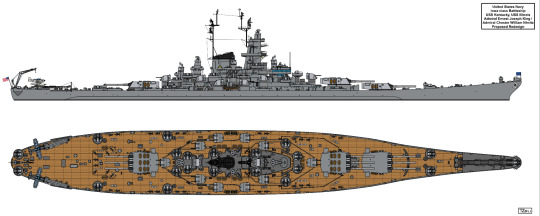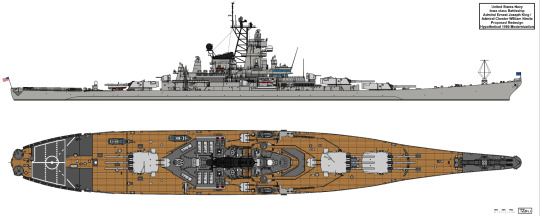#nimitz class
Explore tagged Tumblr posts
Text

wip in progress
#drawing#artists on tumblr#artwork#digital drawing#oc#digital illustration#artist#vtuber#digital art#art#ceres fauna#nimi nightmare#Nimagery#nimit malavia#nimino#nimitz class#erios nimis#bw sketch#indie
21 notes
·
View notes
Text

"Proceedings Photo of the Week: Sailors pet Lucky, a therapy dog from the Alliance of Therapy Dogs, in the hangar bay onboard Nimitz-class aircraft carrier USS RONALD REAGAN (CVN-76) as the ship prepares to depart Naval Air Station North Island, California."
Photographed by Charlotte Dudenhoeffer on August 10, 2024.
Posted on the U.S. Naval Institute Facebook page: link
#USS RONALD REAGAN (CVN-76)#USS RONALD REAGAN#Nimitz Class#Aircraft Carrier#Warship#Ship#United States Navy#U.S. Navy#US Navy#USN#Navy#Naval Air Station North Island#California#West Coast#August#2024#my post
25 notes
·
View notes
Text




USS Shostakovich
9 notes
·
View notes
Text


Star Trek: Discovery - USS Europa by Joel Durham
#Star Trek#Star Trek: Discovery#Federation#STarfleet#Nimitz Class#USS Europa#Sci-Fi#Mecha#Spaceship#Joel Durham
70 notes
·
View notes
Text

🔴E-2C Hawkeye Land On Nimitz-Class Aircraft Carrier
PACIFIC OCEAN (Aug. 7, 2007) - An E-2C Hawkeye, attached to the squot; Golden Hawks squot; of Carrier Airborne Early Warning Squadron (VAW) 112, lands on the flight deck of the Nimitz-class aircraft carrier USS John C. Stennis (CVN 74) after completing a training mission as part of exercise Valiant Shield 2007. The John C. Stennis, Kitty Hawk and Nimitz Carrier Strike Groups are participating in Valiant Shield 2007, the largest joint exercise in recent history. Held in the Guam operating area, the exercise includes 30 ships, more than 280 aircraft and more than 20,000 service members from the Navy, Air Force, Marine Corps, and Coast Guard. U.S. Navy photo by Mass Communication Specialist 3rd Class Jon Hyde
#military#aircraft#air force#us air force#usaf#fighter jet#aviation#fighter plane#plane#us navy#us marines#E-2C Hawkeye#aircraft carrier#aviation photography#aviation history#military aviation#pacific ocean#USS John C. Stennis#CVN 74#Nimitz-class#kitty hawk#Nimitz Carrier Strike Groups
33 notes
·
View notes
Text
Aircraft Carriers: Powerhouses of Modern Navies - A Deep Dive into Nimitz-Class, Queen Elizabeth-Class, and Global Carrier Fleets
Introduction to Aircraft Carriers
Aircraft carriers are monumental warships that serve as mobile airbases, enabling nations to project power far beyond their shores. They provide a platform for launching and recovering aircraft, which can perform a variety of roles, including air superiority, ground attack, anti-submarine warfare, and reconnaissance. These capabilities make aircraft carriers critical assets in modern naval strategy, allowing countries to exert influence over vast maritime regions, respond quickly to crises, and support global military operations.

Nimitz-Class Aircraft Carriers
The Nimitz-class carriers are a class of ten nuclear-powered aircraft carriers in service with the United States Navy. Named after Fleet Admiral Chester W. Nimitz, a key figure in the Pacific theater during World War II, these carriers have been the backbone of the U.S. Navy's carrier fleet since their introduction in the 1970s.
Design and Specifications: Nimitz-class carriers are among the largest warships in the world, each displacing around 100,000 tons. They measure approximately 1,092 feet in length and have a beam of 252 feet. Powered by two nuclear reactors, these carriers have a virtually unlimited range and can operate for over 20 years without refueling, providing sustained presence and flexibility.
Capabilities: The Nimitz-class carriers can accommodate about 90 aircraft, including F/A-18 Hornets, EA-18G Growlers, E-2C Hawkeyes, and MH-60R/S helicopters. The flight deck is equipped with four steam catapults, enabling rapid launch and recovery of aircraft. Advanced radar systems, electronic warfare capabilities, and missile defenses protect the carrier from various threats, ensuring it can operate effectively in contested environments.
Role and Deployment: Nimitz-class carriers have been deployed globally, participating in combat operations, humanitarian missions, and training exercises. They play a crucial role in projecting U.S. power, providing a credible deterrent, and supporting allies. Notable deployments include operations in the Persian Gulf, where they have supported combat missions in Iraq and Afghanistan, and disaster relief efforts in Southeast Asia.
Queen Elizabeth-Class Aircraft Carriers
The Queen Elizabeth-class carriers mark the Royal Navy's return to operating large aircraft carriers. This class comprises two ships: HMS Queen Elizabeth and HMS Prince of Wales. These carriers are the largest and most advanced warships ever built for the Royal Navy.
Design and Specifications: Each carrier displaces around 65,000 tons and measures 920 feet in length. They are conventionally powered, utilizing integrated electric propulsion systems. The design features twin islands, which improve command and control, and a ski-jump ramp for short take-off and vertical landing (STOVL) operations. The flight deck is capable of accommodating up to 40 aircraft.
Capabilities: The Queen Elizabeth-class carriers are designed primarily to operate the F-35B Lightning II, a fifth-generation multirole stealth fighter capable of STOVL operations. They can also deploy various helicopters, including the Merlin for anti-submarine warfare and airborne early warning, as well as Chinooks for troop transport. These carriers are equipped with advanced radar and self-defense systems, ensuring they can operate in high-threat environments.
Role and Deployment: These carriers enhance the UK's ability to project power globally. HMS Queen Elizabeth has already completed her maiden operational deployment, integrating with NATO allies and participating in multinational exercises in the Mediterranean, Indian Ocean, and the Pacific. The Queen Elizabeth-class carriers are expected to be central to the UK's defense strategy, providing rapid response capabilities and supporting international security efforts.
Aircraft Carriers by Country
Aircraft carriers are a potent symbol of naval power, and several nations operate or are developing carriers to bolster their strategic capabilities.
United States: The U.S. Navy operates 11 aircraft carriers, including the Nimitz-class and the new Ford-class, which will eventually replace the older Nimitz-class ships. These carriers form the core of the U.S. Navy's blue-water capabilities, ensuring global reach and influence. The Ford-class carriers introduce advanced technologies, including electromagnetic catapults and improved nuclear reactors, enhancing operational efficiency and combat capability.
United Kingdom: The Royal Navy operates two Queen Elizabeth-class carriers, which restore its ability to conduct carrier strike operations. These carriers are pivotal to the UK's defense strategy, enabling rapid response to crises and supporting global security efforts. Their integration with F-35B aircraft and advanced support systems enhances their operational versatility and effectiveness.
France: The French Navy operates the Charles de Gaulle, a nuclear-powered aircraft carrier. Commissioned in 2001, it supports a range of operations, from air superiority to anti-submarine warfare. The Charles de Gaulle has been deployed in various missions, including combat operations in the Middle East and humanitarian relief efforts. France plans to develop a new-generation carrier to replace it by the late 2030s, ensuring continued carrier capability.
China: China has been rapidly expanding its carrier capabilities, with two carriers currently in service: Liaoning (a refitted Soviet-era carrier) and Shandong (an indigenous design). A third, more advanced carrier, the Type 003, is under construction. These carriers signify China's growing naval ambitions and its desire to project power in the Asia-Pacific region. They support China's strategy of securing its maritime interests and extending its influence.
India: The Indian Navy operates INS Vikramaditya, a modified Kiev-class carrier, and is building its first indigenous carrier, INS Vikrant. These carriers are crucial for India's strategic presence in the Indian Ocean and beyond. They enhance India's ability to project power, support regional stability, and respond to maritime threats.
Russia: Russia's carrier capability is currently limited to the Admiral Kuznetsov, a vessel that has faced numerous technical challenges and is undergoing a lengthy refit. While Russia has plans to develop new carriers, financial and technical hurdles have delayed progress. Despite these challenges, Russia continues to prioritize carrier development as part of its broader naval modernization efforts.
Other Countries: Several other nations, including Italy, Spain, and Japan, operate smaller carriers or amphibious assault ships capable of launching fixed-wing aircraft. These platforms enhance their regional capabilities and support international operations. For instance, Japan's Izumo-class ships are being modified to operate F-35B aircraft, reflecting a strategic shift towards increased carrier capability.
Conclusion

Aircraft carriers by country remain a central component of modern naval strategy, offering unmatched versatility and power projection. The Nimitz-class and Queen Elizabeth-class carriers exemplify the pinnacle of carrier design and capability, each serving their respective nations' strategic needs. As more countries seek to develop or expand their carrier capabilities, the global naval landscape continues to evolve, underscoring the enduring importance of these formidable vessels. Whether through deterrence, humanitarian aid, or combat operations, aircraft carriers will continue to shape the future of naval warfare.
0 notes
Text
Today’s Problematic Ship is the USS Harry S. Truman


The USS Harry S. Truman is a Nimitz-class nuclear powered aircraft carrier. Late at night, local time, on February 12, 2025, near Port Said, Egypt, the northern mouth of the Suez Canal, the 332 m, 100 000 tonne warship collided with the M/V Besiktas-M. The latter is a Panama-flagged, 188.5 m, 53000 tonne bulk carrier. As of February 13, the extent of the damage to either ship is unknown, but there are so far no reports of casualties aboard.
482 notes
·
View notes
Text

SOUTH CHINA SEA (Dec. 28, 2024) E-2D Advanced Hawkeyes assigned to the “Black Eagles” of Carrier Airborne Early Warning Squadron (VAW) 113 are taxied onto the carrier aircraft elevator aboard the Nimitz-class aircraft carrier (CVN 70), Dec. 28, 2024. Vinson, the flagship of Carrier Strike Group ONE, is underway conducting routine operations in the U.S. 7th Fleet area of operations. (U.S. Navy photo by Mass Communication Specialist 3rd Class Nate Jordan)
125 notes
·
View notes
Text

PACIFIC OCEAN (Dec. 13, 2022) A F/A-18E Super Hornet, assigned to the “Golden Dragons” of Strike Fighter Squadron (VFA) 192, taxis on the flight deck of Nimitz-class aircraft carrier USS Carl Vinson (CVN 70) during fixed wing flight operations. Vinson is currently underway conducting routine maritime operations. (U.S. Navy photo by Mass Communication Specialist 3rd Class Analice Baker)
74 notes
·
View notes
Text
Earlier this week, at the Auburn Avenue Research Library in Atlanta, a couple dozen fellows commenced a year-long project designed to put the mission of preserving Black history back in the hands of community members.
“We want to open up a conversation asking, ‘What does it look like for a community of Black people to come together and decide what to collect?’” says Makiba Foster, cofounder of the Web Archiving School (WARC), a new training program that teaches practitioners methods of digital preservation built around an “ethic of care.”
“We don’t want to depend on institutions for folks to have these kinds of skills. They will backtrack on us when it’s beneficial to them.”
WARC could not have arrived at a more urgent moment. Since taking office in January, President Donald Trump has targeted diversity, equity, and inclusion (DEI) aggressively and vowed to fight “anti-white” racism. He first signed an executive order to end “radical and wasteful” diverse hiring practices in federal agencies, then followed that with another aimed squarely at DEI programs in the private sector. But it didn’t stop there. In March, Trump signed an executive order accusing the Smithsonian Institution of having “come under the influence of a divisive, race-centered ideology.” Taken together, the proclamations are part of the administration’s broader attempt to sanitize so-called “woke ideology” from the annals of American life and “forge a society that is color-blind and merit based.” But not everyone views it that way.
“There is an attempt at dehumanization happening,” Bergis Jules, an archivist and WARC cofounder says. “The first act of taking away someone’s humanity is denying the fact that you have a history. And if you’re trying to take that away, then you don’t believe those people need to exist.”
WARC’s inaugural class—22 fellows whose backgrounds span everything from research and library science to visual and audio art—are training to become the next generation of Black “memory workers” with the right tools to digitally preserve the histories that are important to them. As many agencies, public and private, have quickly fallen in line with Trump’s orders, Foster says she’s not going to rely on legacy institutions to do that important work.
“When it's time to make a statement around DEI, and it’s a bandwagon thing, it’s cool. But when the rubber meets the road and someone's telling you can’t do this, people quickly turn,” she says.
WARC is the flagship program of the Archiving the Black Web collective that Foster and Jules started in 2019, inspired in part by their work documenting the Black Lives Matter movement.
Their efforts come as scholars are sounding the alarm over Trump’s latest war on museums—and history itself. “In this naive effort to control how the past is recorded and interpreted, the Trump administration has stepped into a minefield,” David Blight, president of the Organization of American Historians, wrote in The New York Times.
In March, a biography about baseball hall-of-famer Jackie Robinson was removed from the Nimitz Library in the US Naval Academy, along with 400 books tied to DEI. The following month, the National Park Service removed references to Harriet Tubman’s role in fighting against enslavement on a webpage; that information has since been restored. In the executive order targeting the Smithsonian network of museums, Trump calls out, “The Shape of Power: Stories of Race and American Sculpture,” an exhibit at the American Art Museum, as part of a so-called coordinated effort to “portray American and Western values as inherently harmful and oppressive.”
Meredith D. Clark, a professor of race and political communication at UNC-Chapel Hill, tells WIRED that museums are akin to “public trusts,” and the Trump administration’s assault on them is an attempt to dictate who does and doesn’t belong.
“One of the things that power needs to do in order to expand and conquer is to convince people that there is no hope in resistance. And a tool for doing that is to destroy heritage,” says Clark, who wrote We Tried to Tell Y’all: Black Twitter and the Rise of Digital Counternarratives. “You can see those patterns everywhere, from the Holocaust and the burning of books to, in more recent years, the destruction of historical reservoirs and artifacts in Syria.”
Even though they can be a cesspool of racism and bigotry, social media platforms, from X to TikTok, are now de facto outlets for resistance as digital media has become the primary mode of communication. As facts get easier to manipulate thanks to AI and lack of moderation, information—and our access to it—becomes even more vital. One way online activists and educators have traditionally fought back is through the creation of crowdsourced syllabi recommending resources around issues of police abuse, white supremacy, and race for educators.
“We saw it with Ferguson and Charlottesville,” Clark says of the Twitter campaigns from 2014, following the killing of unarmed Black teenager Michael Brown by police, and 2017, in the wake of the Unite the Right rally where violent protests broke out and a white supremacist murdered a woman with his car.
Foster says the country underwent a “pedagogical shift” during this time.
“Black people were saying that ignorance is no longer a defense. Folks were publishing reading lists, opening up their syllabi. All of a sudden you could educate yourself on these issues, and I wanted to document that,” Foster says. “When it comes to preserving an official record, they typically don’t care what we think,” she says of large, often federally backed institutions, which is why social media has become crucial.
The National Libraries and the Internet Archive were, for a time, the principal institutions dedicated to cataloging the web. But “only a small set of people were involved in that community,” Jules says, “and Black folks studying to be archivists were not invited to those networks.”
A nonprofit that launched in 1996, the Internet Archive operates as a library of sorts: It includes 835 billion web pages, 44 million books and texts, and 15 million audio recordings, in addition to other artifacts. Many people today think of it as the web’s collective memory. In April, the Internet Archive, which was already facing legal troubles in separate cases from Universal Music Group and the book publisher Hachette, was targeted by Elon Musk’s Department of Government Efficiency when the agency cut funding for the National Endowment for the Humanities, which supports the archive.
In spite of the administration's purge, Rudy Fraser, the creator of Blacksky, says he is “heartened by preservation efforts” he’s seen so far, including from Harvard Law Library’s Innovation Lab—which is rescuing federal datasets—and companies such as Joy Media, which leverage AI and VR/AR to scan and annotate African artifacts, making them accessible to people on the continent who otherwise can’t view them.
In 2023, Fraser launched Blacksky, the custom feed and moderation service that quickly turned into the central meeting ground for many Black users on Bluesky. He tells me he also views Blacksky as a living archive. Currently its database holds 17 million posts from Black users over the last two years (excluding deletions and moderation removals). “Because the AT Protocol is public and Blacksky’s implementation is open source, anyone with the technical chops could reconstruct the dataset—minus moderation actions—even if our primary databases disappeared,” he says. “Open source, decentralized tooling ensures that, if any single company becomes a nation-state target, the communities that rely on its infrastructure can keep operating.”
Preservation efforts have also taken the form of rogue civil rights courses across college campuses. When Washington Post columnist Karen Attiah’s course on race, media and global history was discontinued by Columbia University in April, Attiah decided to “liberate my teaching work” by hosting it as an online course, aptly rebranding it “Resistance Summer School.”
“This is not the time for media literacy or historical knowledge to be held hostage by institutions bending the knee to authoritarianism and fear,” she wrote on her Substack. The outpouring of support was seismic. According to Attiah, within 48 hours, all 500 seats were filled; the waiting list currently has over 3,000 people on it.
It is still too soon to say just how much of a long-term impact Trump’s attack on Black history is going to have on our population's historical literacy, but Foster and Jules say they are not deterred by the work ahead of them.
“What does it mean for the federal government, at this moment, to be stewards of Black people’s history? It only takes the stroke of a pen to start dismantling things. So what does that mean looking forward?” Jules says.
Ultimately, road maps to a better future are impossible without grassroots preservation efforts, Clark says. “The destruction of those histories and records makes it harder for people to remember what that progress looked like. Both its successes and its failures. And it makes it harder for people to imagine what continued progress could look like. That is the whole point.”
43 notes
·
View notes
Text
Boat touching : shipping edition
"Rule for thee, but not for me ! Grab ‘em by the boaty !" - Trump, apparently
As you may or may not have heard, President Trump, the world’s most economically illiterate dorito (no, he is not a tangerine, he is far too salty for that) has decided that China is being bad on the waters of the 7 seas too, and has decided that the perfect retaliation to such dishonor would be a tax on Chinese ships. Yes, yes, not products, ships. That come into US ports. With stuff on board. Those ships. One might expect a nation that so passionately tells the world ‘don’t touch our boats’ to understand that molesting other peoples’ fleet may not be conductive to a better situation, but alas, here we apparently are going. So, since this is a rather niche topic, but with wide reaching consequences, I have decided to continue in my glorious efforts to become the Economy Side of Tumblr (what has my life come to) and explain just how deeply and passionately boned we are if this goes from proposal to law.
The facts
First off, let us set this stage with the letter of the (proposed) law.
The text (called USTR) has 3 tax triggers :
- The ship is operated by a Chinese company, 500K to 1 million dollars of entry fee
- The ship is chinese-made or its owner company has chinese-made ships, 500K to 1,5 million dollars of entry fee
- The company ordered a ship in China, 500K to 1 million dollars of entry fee
It is currently unclear to me if those fees are cumulative, despite looking it up, I could not find an answer at this time, the only thing clear is that the fee, whatever it ends up being, will be paid at each entry into a US port. I suspect the cumulativity of the fees will be left to interpretation and later deliberation, which creates deep economic uncertainty, easily one of the most hateful kinds of uncertainty.
I mean, not knowing if you’re ordering oatmeal or chocolate cookies is already bad enough, but not knowing if the ship carrying them to your shores is going to pay 500k to 1,5 million dollars or 500K to 3,5 million dollars PER STOP is just … that ruins the cookies regardless of what you get. No amount of milk can salvage that. In large parts because, at this point, each cookie may end up costing as much as the entire bottle of milk.
“Oh hoho, oh Admiral, you jokester, you jester, you funny person you”, you say desperately hoping that I am joking. But you are desperate for a reason. There is no humor here, there is no mirth or hope or joy, only suffering and taxes. And barnacles. Those get everywhere on topics related to the sea. But mostly taxes.
Second, container ships tend to make 3 to 4 stops in US ports for a single trip (as explained in this lovely article from the Cato Institute), which results in a total potential sum of 1,5 to 14 million dollars. Per ship. For a single trip. You can scream now.
Third, how many companies could be affected by this issue ? I do not have a precise number, in large parts because “who has Chinese ships” wasn’t exactly a metric that got tracked before, but the answer to that question is in an order of magnitude scientifically called “a metric fuckton”. You see, the chinese fleet of cargo ships represents 19% of the global total of cargo ships. And I mean ocean-going cargo ships. So that’s a good 5th of worldwide maritime trade having to scrape off even their barnacles to try and make payments. But that’s just Chinese companies. You also have to take into account that China has 50% of all shipbuilding market shares, meaning it builds half the commercial ships in the world. Among which are 95% of container ships. The big chunky bois, those that can get to lengths greater than the Nimitz class super-carriers operated by the US Navy and do a respectable 2/3rd of their width. Oh, and China also does 86% of intermediate sized cargo ships.
Fourth, fun fact : big container ship dockyards stopped operating in the US in 1980. You know, just in case you thought you could revive that industry quickly, or on the cheap, or on the costly. Or at all, really. Building those big ships is VERY costly, and takes very long, and also there’s no adapted infrastructure in the US for ships of that size outside of military dockyards (which are already being used, thank you). So between the cost to build the new dockyards, train employees, build the ship itself and recruit and train a crew … Oh, and the end result would likely not even be competitive price-wise. You know, just in case you had any hope left for that.
Five, SALVATION ! One can have their entry fees waved, if only they have a USA made ship enter into a US port with stuff on board, huzzah, Trump 5D chess confirmed !!!! All you have to do is have a US-made ship enter a US port for each Chinese-made ship that does the same ! Surely, the overbooked, chronically late, undersized ship-building industry of the US will be up to the challenge !!!! Yeah, no, I can’t keep this up any longer. That’s not going to work. It’s not even being spoken about in most of the articles I’ve seen, that’s how insignificant in reality that measure is.
Boat touching, and why it is a bad idea
Now, let’s talk about the funny part : the consequences ! Aaaah, FO, what a wonderful acronym. Am I telling people to fuck off or to find out ? What suspense !
First off, the obvious : if the fee is on entry into US ports, why not go elsewhere ? Good question ! And honestly, it’s likely that it will happen, to some degree. The obvious answer would be Mexico or Canada, but it’s unlikely they could absorb all that transit, which would results in slow-downs (and thus, lost money) in a lot of logistic chains. As you may have guessed, disrupted logistic chains aren’t exactly economically tasty.
Mexico in particular doesn’t have that many ports adapted to such large ships and large numbers of containers, meaning there’d be even more slow-downs. And then there’s the issue of getting the goods across the border, and Trump can definitely decide to slap on even more tariffs, he’s like that. So more slow-downs for even more costs ! Yay ! But meanwhile, US ports would still see lower numbers of ships coming through, meaning less activity and less cash-flow, meaning job losses.
Second, you have to consider the impact on US exports. Because you see, Chinese-made or owned ships don’t just come in, drop stuff off and disappear over the horizon with a vaguely oriental soundtrack, we’re in reality, with serious people, they drop containers off in 3 or 4 ports, all while picking up containers of US exports at each stop. So the fees to sail into port will be spread on both the foreign imports and on US exports. Meaning US exports will cost more, compounded by retaliatory tariffs. Meaning competitors will be cheaper, or even than US products will leave reasonable price ranges. Either way, loss of sales and income for US companies, and thus loss of jobs.
Third, this will increase prices inside the US, once again compounded by tariffs, but this time Trump’s tariffs. Either way, this will increase prices of products, likely pricing out entire communities, or making entire companies economically non-viable. As you guesses, that means job losses, but also loss of comfort.
Fourth, some degree of economic chaos as worldwide shipping reorganizes to face this new and unpleasant situation. And that will likely hit everyone to some degree, so expect some grudges to spawn from that, too.
In conclusion, while there is reasonable concern to be had about China’s dominance of shipbuilding, Trump’s measures will do a grand total of fuck all to solve that issue. All they will really do is make the situation worse and costlier for the US. The measure aims for an impossibility (speedy resurrection of a US shipbuilding sector for large scale cargo ships) without doing anything to support that or to make such an activity economically viable in the US. It is, in effect, an economic scarification ritual, based entirely on the idea that by hurting others and themselves and incantating enough, the US will be able to magic viable dockyards into existence and produce ships quickly.
I hope I don’t have to explain why that’s not realistic. And honestly, I am almost impressed, it’s incredible to come up with a policy that harms that many different economic agents in your own country. Honestly, at this point, I don’t know if Trump’s economic policies are dictated by The Most Incompetent failed student, or by a squad of drunk chimps going ham on a typewriter and somehow randoming their way into only the worst possible economic policies. If Trump suddenly subsidizes banana plantations, we’ll know, and likely be in better hands, even with how psychotic chimps are.
#economy side of tumblr#economy#touching the boats#Trump#ship tax#shipping#China#tumblr academy#geopolitics#economic scarification#economic foot-shooting#magic thinking#even the barnacles will have to pay#the barnacles#in this economy#but seriously I cannot express how incredibly stupid this is#just hang a big banner that says “I hate prosperity” outside the WH#it will be less harmful#then again#the harm seems to be the point#but seriously who told him that was a good idea ?#I just want to talk to them#China won't even suffer that much from it#it's insane#the US will be the most affected
43 notes
·
View notes
Text


King-Nimitz redesign of the Iowa class for USS ILLINOIS (BB-65) USS KENTUCKY (BB-66). The top image shows how they'd look in the mid to late 1940s and to bottom shows how they might be modernized in the 1980s.
Posted on Deviantart by Tzoli: link, link
#USS ILLINOIS (BB-65)#USS ILLINOIS#USS KENTUCKY (BB-66)#USS KENTUCKY#Iowa Class#Battleship#Warship#Ship#Cancelled#United States Navy#U.S. Navy#US Navy#USN#Navy#What if#Cold War#1940s#1980s#my post
51 notes
·
View notes
Text




USS Shostakovich
18 notes
·
View notes
Text

The Arleigh Burke-class guided-missile destroyer USS Curtis Wilbur DDG-54 moored along the same pier as the aircraft carrier USS Nimitz CVN-68 at Port Klang, Malaysia, May 24, 2025. Nimitz is conducting a port call in the U.S. 7th Fleet area of operations on a scheduled deployment, demonstrating the U.S. Navy's unwavering commitment to a free and open Indo-Pacific. May 24, 2025. 🇺🇲⚓🫡
#respect #military #USA #usnavy
21 notes
·
View notes
Text
#hypa 1/1100 #usscarlvinson #cvn70 #usscarlvinsoncvn70 #usnavy #nimitzclass #aircraftcarrier #postworldwar2 #postworldwarii #postww2 #postwwii #modelship #modelbuilding
instagram

#original content#hypa#uss carl vinson#cvn 70#uss carl vinson cvn 70#us navy#nimitz class#aircraft carrier#post ww2#post wwii#post world war 2#post world war ii#model ship#model building#Instagram
0 notes
Text

A F/A-18F Super Hornet, assigned to the “Bounty Hunters” of Strike Fighter Squadron (VFA) 2, recovers on the flight deck of Nimitz-class aircraft carrier USS Carl Vinson (CVN 70), the Pacific Ocean on March 26, 2023. Photo by Seaman Leon Vonguyen, USS Carl Vinson
36 notes
·
View notes